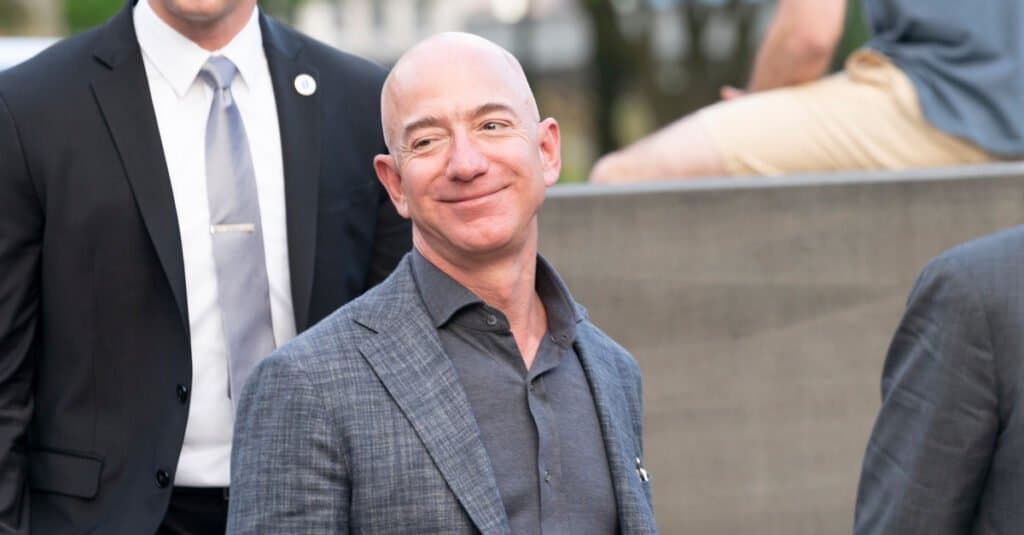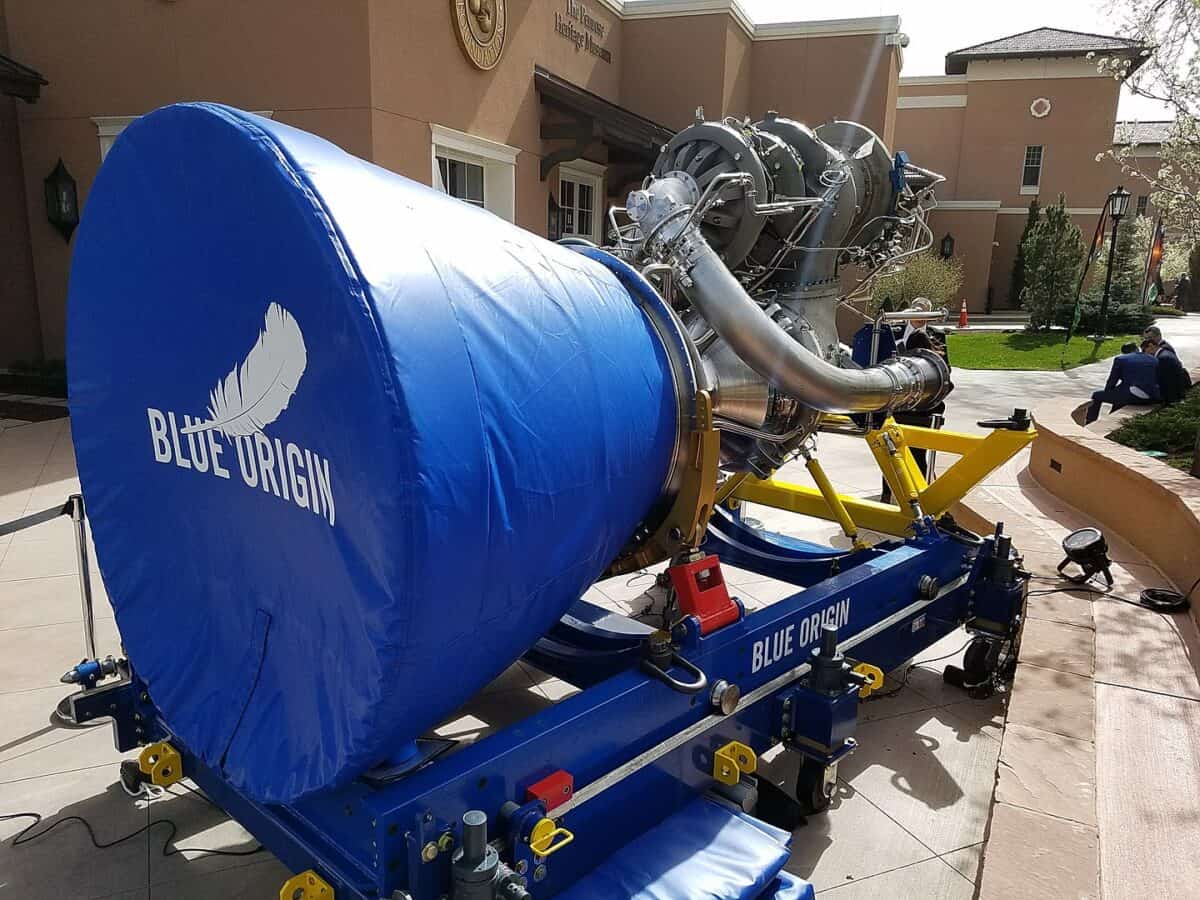On July 21, 2021, Richard Branson went to space on a rocket built by Virgin Galactic, the billionaire’s spaceflight company. He was the first non-government astronaut to fly to sub-orbit, but not by much. Jeff Bezos, the CEO of Amazon, was working on his own rocket.
Bezos founded Blue Origin to reduce the cost of spaceflight. While his launch followed Branson’s by only 10 days, his company continues to explore aerospace technology. Continue reading for everything you need to know about Blue Origin, one of the most prominent companies in space tourism.
The History of Blue Origin: What to Know
Blue Origin is a private aerospace company based in Kent, Washington. The spaceflight manufacturer builds commercial vehicles that launch spacecraft into sub-orbit. They use their vehicles to give people an opportunity to experience space but also contract with corporate and government organizations for missions.
The American aerospace company has 22 years of experience in the industry. The firm employs around 6,000 people and generates $42 million in annual revenue. Similar to SpaceX, Blue Origin has reusable spaceflight vehicles. With this technology, the company attempts to reduce the cost of space tourism.
While Blue Origin operated silently for several years, the company came out loudly in 2015. The spaceflight manufacturer was the first to successfully launch and land a reusable rocket. The first manned flight of the New Shepard carried the company’s founder Jeff Bezos to sub-orbit.
In addition to the company’s initial rocket and respective spacecraft, called the New Glenn, Blue Origin has multiple projects in the work. These include:
- New Armstrong (potentially its next launch vehicle)
- Blue Moon (a crew-carrying lunar lander)
- Project Jarvis (a fully reusable upper stage)
- Orbital Reef (a commercial space station)
Since its grand reveal in 2015, the company has experienced a series of controversies. These include complaints of toxic culture and conflicts with NASA regarding contracts. Jeff Bezos also received backlash for using his own rocket to visit space.
The Founding of Blue Origin: How it Happened

©lev radin/Shutterstock.com
Jeff Bezos, the founder of Amazon, epitomizes the idea of chasing dreams. In an interview, the billionaire revealed that the concept of a spaceflight company came after watching the movie October Sky when it was released in 1999. Bezos had a conversation with science fiction writer Neal Stephensen, who convinced the billionaire to start the company.
In 2000, Bezos incorporated Blue Origin, which got its name from Earth as the Blue Planet. However, the company went relatively silent for six years, with only scraps of plans for a vertical launch vehicle and a slow building of company infrastructure to show. In 2011, the company tested its first vehicle, finally testifying Blue Origin’s commitment to spaceflight.
Blue Origin Through the Years
2000-2014 – Hidden Plans
The foundational years of Blue Origin were kept quiet from the public while it established its base. The company purchased land for a launch pad in 2003 and began building its first launch vehicle. They implemented an incremental development plan, which included work on a suborbital program and an orbital transportation system. In 2011, the company succeeded in testing a booster, and their first crew capsule passed a pad escape test a year later.
2015-Present – Major Announcements
With the company’s first rocket fully tested, Blue Origin began making headlines. Jeff Bezos started investing $1 billion per year into the business to bolster production. In 2015, the company launched the New Shepard into sub-orbit. The rocket booster returned to Earth via parachutes and landed safely, becoming the first suborbital booster to do so.
With the aerospace manufacturer having a validated launch vehicle, the company continued to develop its systems for manned spaceflight. In 2021, Jeff Bezos rode on the New Shepard’s first crewed mission to suborbital space alongside three other passengers. This announced the beginning of Blue Origin’s space tourism feasibility.
What Are the Most Important Inventions from Blue Origin?
New Shepard
The New Shepard is Blue Origin’s suborbital launch vehicle. The rocket is designed for manned missions to suborbital space and features a reusable first stage. The company’s intention with New Shepard is to reduce the cost of suborbital travel and to expand the space tourism industry. Since its first manned mission in 2021, New Shepard has carried 32 passengers into space.
New Glenn

©N2e, CC BY-SA 4.0 <https://creativecommons.org/licenses/by-sa/4.0>, via Wikimedia Commons – Original / License
Building upon the research collected with New Shepard, Blue Origin is building an orbital launch system called New Glenn. This is the company’s first heavy-lift launch vehicle, with a payload capacity of 99,000 pounds. The aerospace manufacturer plans to use this rocket for supporting missions of NASA’s Artemis program.
How Does Blue Origin Make Money?
While the company finishes its heavy-lift rocket, Blue Origin makes money primarily through space tourism. In 2021, the first seat aboard New Shepard was publicly auctioned for $28 million. Since then, the company has generated over $100 million in commercial space travel.
Still, the company doesn’t fund its massive projects on tickets to space alone. In 2016, Jeff Bezos announced that they would fund the company with his own money, up to $1 billion a year through selling off Amazon stock. Since then, Bezos has invested nearly $8 billion into Blue Origin.
Blue Origin Acquisitions
Honeybee Robotics
The R&D and manufacturing company was founded in 1983 and has assisted NASA on its last three Mars missions for over 30 years. Honeybee Robotics specializes in electromechanical systems for harsh climate infrastructure and exploration. Blue Origin acquired the company in late February.
Blue Origin Notable Controversies
Toxic Work Environment
Several current and past employees of Blue Origin claim blatant sexism, harsh consequences for speaking out, and a concerning disregard for safety. In 2019, former head of employee communications Alexandra Abrams was fired after bringing up issues of aggressive culture and rushed vehicle engineering. Abrams released an essay regarding various experiences from her time with the company.
Petition to Stay in Space
Following the announcement of Bezos’ intention to fly to space on New Shepard’s first manned mission, A petition was started to bar the billionaire from returning to Earth. The petitioner stated that “Billionaires should not exist…on earth, or in space. But should they decide the latter, they should stay there.” The petition received over 200,000 signatures, one of the most signed on change.org. The movement highlights the blatant waste of money that billionaires often flout.

The front of the building of Blue Origin
©Thomas Kelley/Shutterstock.com
Blue Origin: Further Reading
Blue Origin is taking spaceflight into its own hands. The aerospace manufacturer is just one example of how money can change the societal landscape. For more on space tourism and how billionaires are building giant rockets, check out the articles below.
- SpaceX vs Virgin Galactic: A Full Comparison – SpaceX is leading the spaceflight industry in power and efficiency, but what about tourism?
- Blue Origin vs Virgin Galactic: How Do They Stack Up? – Two billionaires go head-to-head in their exclusive race to space.
- The 10 Most Powerful Rockets Ever Built – How do today’s modern launch vehicles match up against the most powerful rockets in history?
How Many Satellites Does Musk’s Starlink Have in Orbit? – SpaceX plans to have as many as 42,000 Starlink satellites in orbit. How close is it to that number.